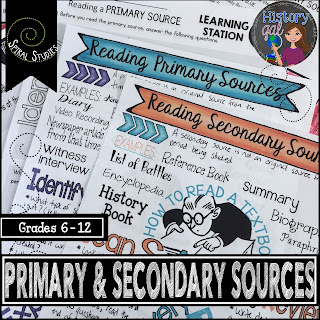Have you ever done things a certain way for years and then had a revelation that you've been doing it wrong? Well, this happened to me a few years ago.
I've always liked to assign reading homework to my high school students so they'd be prepared for the next day's lesson. And, every time, the results were dismal. I'd pretty much given up on having students read when a conversation I had with some other teachers helped me realize that I was going into the new school year with a huge assumption.
I assumed that somewhere along the line - in middle school or as freshmen - that my students had been taught HOW to read secondary sources.
I was wrong.
So, I decided I needed to fill this gap. I couldn't just keep doing the same old thing. I needed to give my students the tools they needed to read a secondary source like their textbook. And, I wanted to make it more enjoyable then me standing at the front of the room and telling them.
First, I created an acronym to help students remember what to do. Reading a secondary source is not the same as reading a novel. Students need to train themselves to look at and read the text differently.
 The acronym I came up with is SARR.
The acronym I came up with is SARR.S - Scan the text
AR - Actively Read
R - Review
Then, I created a doodle notes page and a short PowerPoint for the reading steps. I created a blank version for my upper level students as well as a fill-in-the-blanks version for my lower level students. I have a short teacher-lead instructional period to cover the material on the doodle notes page and then the rest of the class is spent in stations.
Station 1: Students use color to identify primary and secondary sources.
Station 2: Students do a card sort to identify primary and secondary sources.
Station 3: Students practice reading a secondary source.
To help, download this free set of bookmarks - one sets guides students through the process while they read and the other set is a reminder of the steps.














No comments
Thank you for leaving a comment! Comments must be approved before they are posted so there will be a delay in submitting a comment and seeing it on the site.